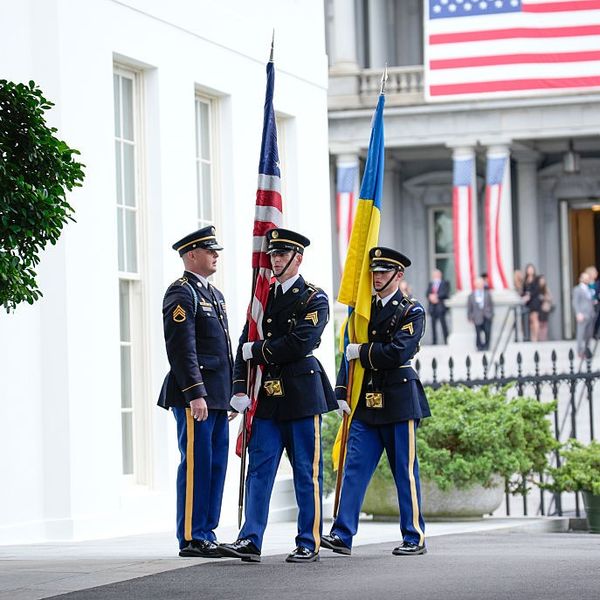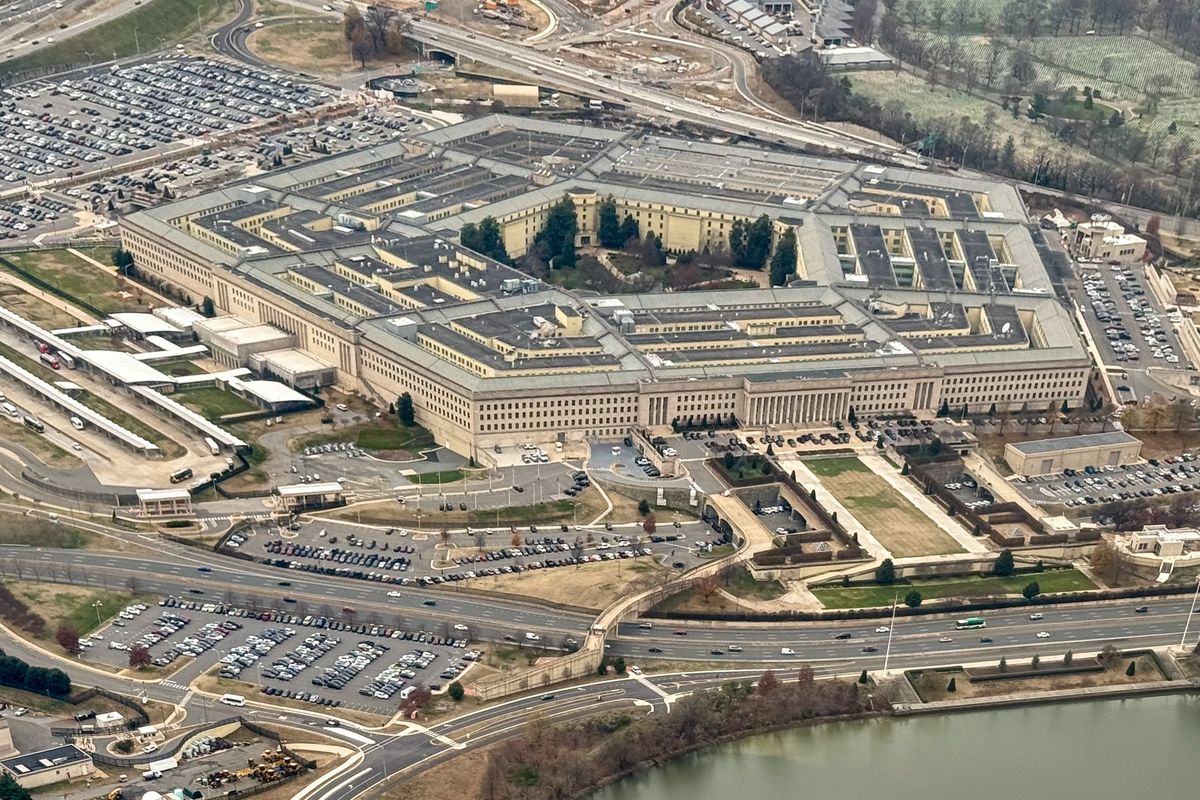OPINION — While there has been much attention paid to Russian President Vladimir Putin’s difficulty raising his 300,000 new conscripts, there’s been little public discussion about the problems the Defense Department is having in getting its own new recruits.
While all services in fiscal 2022, raised 177,000 men and women, the U.S. Army fell 15,000 short of its fiscal 2022 goal of 60,000 new soldiers, even though America’s service personnel are not today engaged in major fighting as is Moscow’s struggling army.
The U.S. Navy met its 2022 goal for new active-duty sailors but will fall short of Navy Reserve enlistments as well as its goals for active and Reserve officers. The Air Force too, hit its 26,000-person recruitment goal for this year, but also fell short when it came to its Reserve components.
The Marine Corps made its goal by slightly lowering its recruitment goal midyear. However, by increasing its retention of retirees, the Corps was able stay close to its original personnel goal.
Some of the Pentagon’s problems were laid out in a Senate Armed Services subcommittee hearing back on September 21, but the situation deserves a broader discussion.
“Our shortfall constitutes an unprecedented mission gap and is reason for concern for the greater state of national service,” Stephanie Miller, Deputy Assistant Secretary of Defense for Military Personnel Policy, told the subcommittee. “Recruiting shortfalls are not merely a DoD issue, but a national one.”
One stunning figure brought out in the hearing by Lt. Gen. Douglas Stitt, Army Deputy Chief of Staff for Personnel, was that “currently, only 23 percent of 17-to-24-year-old Americans are fully qualified to serve,” with the “top disqualifiers for service [being] obesity, addiction, conduct, test scores, medical and behavioral health conditions.”
The Pentagon has said that of those 31.8 million U.S. 17-to-24-year-olds, only about 9.1 million meet the basic physical requirements and of those, only some 4.4 million have the minimal academic requirements to enlist.
The Cipher Brief hosts expert-level briefings on national security issues for Subscriber+Members that help provide context around today’s national security issues and what they mean for business. Upgrade your status to Subscriber+ today.
Just five years ago, according to 2017 Pentagon data, 29 percent were eligible to serve and that was considered an alarming situation and dangerous for the country’s fundamental national security. Now, those eligible for service has dropped by six percent in just five years, making the pool for recruits that much smaller.
Looking to the future, Lt. Gen. Caroline Miller, Air Force Deputy Chief of Staff for Manpower, Personnel, and Services, told the Senators, “One major concern is that the current youth market is increasingly disconnected and unfamiliar with the military, resulting in fewer youth interested or planning to join.”
“Today,” Miller added, “only one of 11 eligible individuals in the 17-to-24-year-old range has a propensity to serve.”
Maj. Gen. Edward Thomas Jr., commander of the Air Force Recruiting Service, told The New York Times last July, “There are just lower levels of trust with the U.S. government and the military.” In 2021, the annual Reagan National Defense Survey, conducted by the Ronald Reagan Presidential Foundation and Institute, found that just 45% of Americans had a great deal of trust and confidence in the military, down 25 points since 2018.
The post-Trump era, with the questioning of our election process, the increased claims of fake news, the growing partisan nature of our politics and challenges to institutions all are having an effect on the youth needed for our professional military.
A DoD Fall 2021 poll of youth aged 16-to-21, released last August, showed that only 11 percent of those males and eight percent of females thought they would definitely or probably serve in the military. Highest among those polled, 17 percent of African-Americans, who put themselves in the definitely/probably category.
Overall, only one percent of the entire group thought they “definitely” would be in military service. Ironically, 31 percent of those polled thought they would be ineligible for service, whereas the real number was closer to 80 percent.
Among Americans surveyed by the Pentagon who were in the target age range for recruiting, only 13% had parents who had served in the military, down from approximately 40% in 1995. Military recruiters consider parents one of the biggest influencers for service.
DoD survey data showed 52% of all parents do not recommend military service to their children.
However, another poll filed with the Senate Armed Services subcommittee by the Veterans of Foreign Wars, conducted by the National Military Family Association, showed that 44 percent of “military teens,” children of those in service, intended to serve as against the nine percent of the general 16-to-21 in the general population.
That could indicate that the U.S. may be developing a military tradition in certain families. Back in 2020, research showed that the U.S. military was becoming more and more of a family business, with the majority of recruits following in a close relative’s footsteps, according to an article in Military Times.
However, even that category is dropping.
The non-profit Military Family Advisory Network’s 2021 Support Programming Survey, which involved 8,638 active-duty members, retirees, dependents and veterans, found that, “while 63% of those surveyed would recommend military life to someone considering it, that number was down from 75% in 2019.” The survey also found that “enlisted families were significantly less likely to recommend military life to someone who was considering it and officer families were significantly more likely to recommend military life.”
Another statistic worth considering is the drop in applications to the service academies. The Air Force Academy had 8,393 people apply this past year, a 28% drop from the year before. The Naval Academy at Annapolis saw a 20% application drop for its class of 2026, and West Point, with 12,589 applications had a 10 percent drop from last year.
Some officials cited COVID-19 restrictions as limiting in-person military recruiting for the academies, but some officials said they are competing with other colleges and universities for the same students.
That DoD Fall 2021 poll of youth aged 16-to-21, referred to previously, asked the question, “What would be the main reason(s) why you would NOT consider joining the U.S. Military?”
The top two reasons given by over 60 percent of the respondents were “possibility of physical injury/death,” and “possibility of PTSD or other emotional/psychological issues.”
Asked, “If you were to consider joining the U.S. military, what would be the main
reason(s)?” 58 percent answered “Pay/money,” and 48 percent said, “To pay for future education.”
The military services have recognized that money has become the main motivation to join and have responded with various levels of bonuses.
The Army, last June, facing a recruitment deficit, upped by $10,000 its existing $25,000 “quick ship” bonus to new enlistees who signed a four-year contract and agreed to begin basic training within 45 days. On top of that, if the recruit has other skills, he or she could get up to $50,000 in additional bonuses.
Last spring and summer, the Air Force increased its bonus programs by $22 million and added seven new career fields that drew bonuses of from $3,000 to $6,000 depending on the length of service. Those bonus increases drew 2,200 new recruits, Lt. Gen. Miller told the subcommittee.
The Air Force version of the “quick ship” bonus — another $8,000 if a basic training vacancy existed and the individual shipped out within five days or less – drew another 320 enlistees, Miller said.
All services have cyber and IT (information technology) bonuses with the Air Force, for example, offering from $12,000 to $20,000 to enlistees depending on the recruit’s highest level of certification.
In addition to the current enlistment bonuses available, each service has recognized the desire for future education as a recruitment tool.
The Post-9/11 GI Bill provides up to 36 months of education benefits, including full tuition and fees, a housing allowance, and $1,000 per year for books. In addition, active-duty Army personnel, for example, have access to the Tuition Assistance program which provides soldiers up to $4,000 per year to attend civilian education programs.
What about joining as a citizenship duty or old-fashioned patriotism?
DoD’s Fall 2021 poll of youth did not include patriotic duty as a published reason to join, but showed that 37 percent picked “to help others” as a reason to enlist, while 25 percent chose to “make a positive difference in my community.”
While writing this column, I recall that back in August 2020, after a three-year study, a National Commission on Military, National, and Public Service, appointed by then-President Trump and Congressional leaders, released a report that projected by 2031, the 70th anniversary of President Kennedy’s call for Americans to serve their Nation, “more than enough qualified individuals will seek to serve in the Armed Forces, minimizing the need for traditional military recruiting.”
The Commission also found that “22 percent of American adults cannot name any of the three branches of government,” and therefore the country should undertake “widespread and effective civic education” to foster “a culture of service in which Americans can identify how their own strengths, skills, and interests could contribute to the public good by addressing needs in their communities and Nation.”
At that time, the Commission said, “Nearly 24 million individuals participate in some form of military, national, or public service to meet critical national needs—security, disaster response, education, conservation, health care, housing, and more...But in a country of 329 million, imagine what more could be done if significantly more people were inspired and able to answer the call to serve.”
Perhaps more of the roughly 25 million 16-to-21-year-olds, ineligible for the military, could be encouraged to do national service in the Peace Corps, AmeriCorps or other institutions at the state or local government levels – thus doing more as American citizens than just paying taxes.
Read more expert-driven national security insights, perspective and analysis in The Cipher Brief













